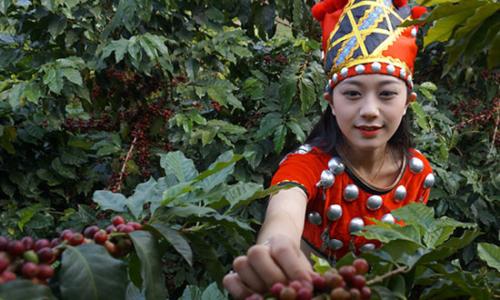Description of taste and flavor of coffee varieties in San Juan, Honduras
Honduras is less well-known in the consumer market because it does not have strong support in the handling and transportation of raw beans. However, in recent years, the country has begun to change dramatically, and the emphasis on the coffee industry has gradually opened up the popularity of coffee in Honduras in the international community.
Honduran coffee comes from El Salvador. Coffee production was lukewarm at first until the frost in Brazil in 1975. At that time, Brazil was badly hit and coffee production plummeted, while Honduras took the opportunity to "take the top". Coffee production soared from 500000 bags to 1.8 million bags and was ransacked. Since then, coffee production in Honduras has really developed.
The geographical conditions of Honduras are not inferior to those of its neighboring coffee producing countries such as Guatemala and Nicaragua. There are 280000 hectares of coffee plantations in Honduras, mainly small coffee plantations, most of which are less than 3.5ha. These coffee plantations account for 60% of the total coffee production in Honduras.
The granules of coffee beans in Honduras are large in shape, uniform in size and glossy in color. In order to facilitate harvesting, farmers will prune the coffee trees to no more than 150 centimeters, because if they grow too high, they must set up ladders to pick, which is not only time-consuming, but also may damage the trees by bending branches.
Honduras is located in the north of Central America, facing the Caribbean Sea to the north, the Gulf of Fonseca in the Pacific Ocean to the south, Nicaragua and El Salvador to the east and south, and Guatemala to the west, mostly mountains and plateaus. It has a tropical climate, mild temperature and abundant rainfall, so it is an ideal place for coffee growth.
Honduras produces two kinds of coffee of very good quality, which are highly respected by coffee lovers. One is "Highland Coffee", which grows at an altitude of 1000 to 1500 meters, and the other is "selected Highland Coffee", which represents the highest level of Honduras, which grows at an altitude of 1500 to 2000 meters. Most of the Honduran coffee is exported to the United States and Germany.

Important Notice :
前街咖啡 FrontStreet Coffee has moved to new addredd:
FrontStreet Coffee Address: 315,Donghua East Road,GuangZhou
Tel:020 38364473
- Prev

Panamanian long-tailed cuckoo champion honey how to handle candle candle coffee beans will taste better.
Panamanian long-tailed cuckoo champion honey how to deal with candle candle coffee beans is better the way cherries are treated into raw coffee beans can be divided into two factions: washing and tanning. Does it make any difference to drink? Generally speaking, the washing method will make the coffee taste bright and clean, while the sun will make the coffee with some light fermented taste and rich feeling. These two kinds are only
- Next

Flavor description method for taste characteristics of Costa Rican Faramy coffee beans
Taste characteristics of Costa Rican Faramy Coffee beans the biggest difference between treated honey and Brazilian semi-washed coffee beans is that the former does not drip, because it is important to choose flawless red fruits for pectin to be sweet. The honey-treated pectin planer is even more demanding, and the thickness of the pectin planing must be precisely controlled, just like a bean grinder in Costa Rica, on a scale like Elsa.
Related
- Detailed explanation of Jadeite planting Land in Panamanian Jadeite Manor introduction to the grading system of Jadeite competitive bidding, Red bid, Green bid and Rose Summer
- Story of Coffee planting in Brenka region of Costa Rica Stonehenge Manor anaerobic heavy honey treatment of flavor mouth
- What's on the barrel of Blue Mountain Coffee beans?
- Can American coffee also pull flowers? How to use hot American style to pull out a good-looking pattern?
- Can you make a cold extract with coffee beans? What is the right proportion for cold-extracted coffee formula?
- Indonesian PWN Gold Mandrine Coffee Origin Features Flavor How to Chong? Mandolin coffee is American.
- A brief introduction to the flavor characteristics of Brazilian yellow bourbon coffee beans
- What is the effect of different water quality on the flavor of cold-extracted coffee? What kind of water is best for brewing coffee?
- Why do you think of Rose Summer whenever you mention Panamanian coffee?
- Introduction to the characteristics of authentic blue mountain coffee bean producing areas? What is the CIB Coffee Authority in Jamaica?

